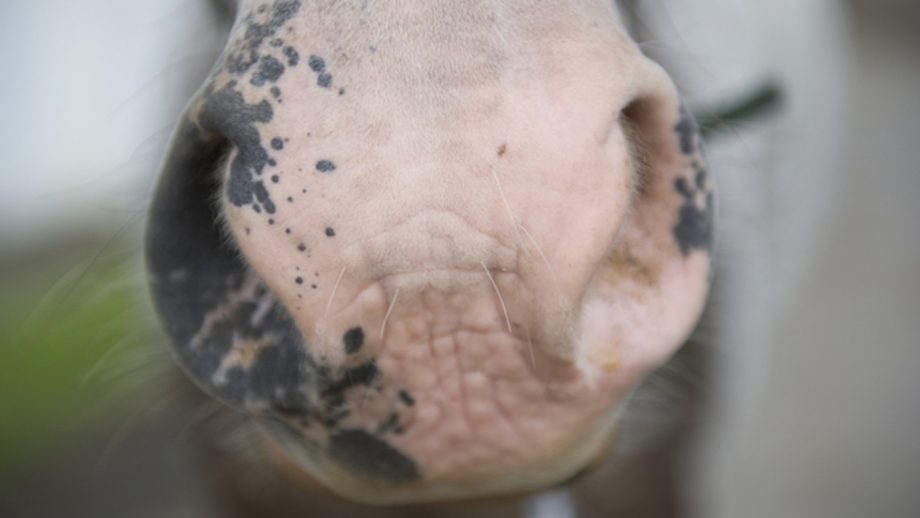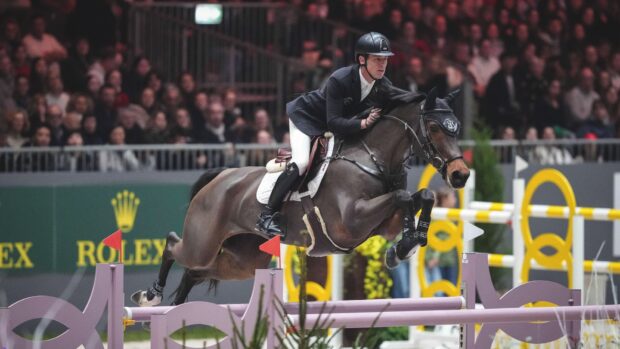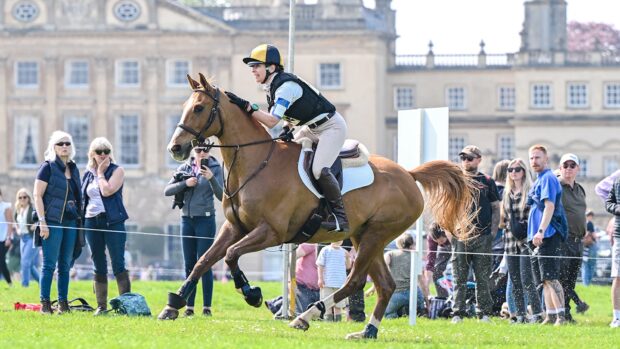The owner of a horse who was given about a 50% chance of survival as he was in such pain says she will never trim whiskers again.
Eloise Towning’s former racehorse Blue Blooded (BB) progressed from his normal self to an unrideable head-shaker within weeks, in summer 2017. She spent thousands of pounds trying to get to the bottom of his new behaviour, to no avail.
“I love him more than anything but when I got to [the equine hospital] in the October, and the vet said if he didn’t get better after the treatment, he’d have to be put to sleep, by that point, I just wanted him not to be in pain,” Eloise told H&H.
“It didn’t matter what I wanted; if that was the only option, we’d have done it.”
Eloise had bought BB in 2016. He had suffered a check ligament injury, and was coming back into work in the next summer, so she tidied him up, including trimming his whiskers, as she and her family had always done.
“I never made the connection,” she said. “He started nodding, and over the next five weeks, it got to the point where he’d stand at the back of his stable with his eyes closed and wouldn’t move, it was awful.
“The vet had said head-shaking was something that didn’t often end well; the horse often has to be put to sleep and I thought ‘What do you mean?’ I’d never heard of head-shaking or neuralgia.”

Head-shaking can be caused by hypersensitivity of the trigeminal nerve in the head, which responds as if it has encountered a painful stimulus. Although it is a misfire, the pain felt by the horse is real.
By the end of September, Eloise had had a battery of tests carried out but was no nearer to finding the cause of BB’s issues.
“He was so uncomfortable; walking round the field, flipping his head or in the back of his stable,” she said. “He was referred to the equine hospital, where the vet said if the treatment they were going to do didn’t work, he’d pretty much have to be put to sleep.
“She said he was in so much pain; it’s sensory overload, and like having a migraine, and ants running all over your head.”
BB was given PENS neuromodulation treatment, which is also used in humans to give relief from neuropathic pain. The aim was to try to override the nervous system and almost reset the trigeminal nerve.
“He had another treatment three days later so he had to stay there,” Eloise said. “I was dying because I couldn’t see him, and they kept texting to say there was no improvement.
“Two weeks later, he had another go, and when he got home, he was slightly better, but still head-shaking.”
Over the next few weeks, BB got better and better; by November, he was back in ridden work, and he has not looked back since.
“It lasted from August to December, and that’s how long his whiskers took to grow back,” Eloise said. “My vet, who’s incredible but old-school, told me not to be so stupid, that can’t have been the cause, but the more I think about it, the more it makes sense.”
Owing to the ligament injury, that summer was the first time Eloise had trimmed BB’s whiskers. She was warned it can often be a seasonal conditions, so she dared not plan any competitions the following spring, but he has not suffered since.
“There’s no science behind it being his whiskers and lots of people think differently; he could have just got better, but the more I investigated, the more it made sense,” she said. “The vet kept saying he had sensory overload, it was all in the head, and the whiskers are sensory, and it’s all the same area.
Continues below…

Ban on trimming horses’ whiskers for international competitions starts today
The ban came into force at FEI events on 1 July

Call for whisker-trimming to be banned in UK *H&H Plus*

Headshaking in horses: what you need to know about this distressing condition

Subscribe to Horse & Hound magazine today – and enjoy unlimited website access all year round
“Some head-shakers only do it in daylight, but he did it all the time; it makes you think.”
Eloise said she had always trimmed whiskers, without realising their true function.
“I had no idea,” she said. “I’m never touching them again.”
H&H vet Karen Coumbe said: “The whiskers provide almost constant sensory input from all the nerve signals received from their touch receptors, which dampen other signals going to the brain. So, if the whiskers are removed, it can alter pain perception.
“It is very possible that this will affect the horse’s brain and potentially trigger head-shaking. It will be interesting to see if the new legislation will reduce the incidence of head-shaking going forward.”
Horse & Hound magazine, out every Thursday, is packed with all the latest news and reports, as well as interviews, specials, nostalgia, vet and training advice. Find how you can enjoy the magazine delivered to your door every week, plus options to upgrade to access our H&H Plus online service which brings you breaking news as it happens as well as other benefits.




